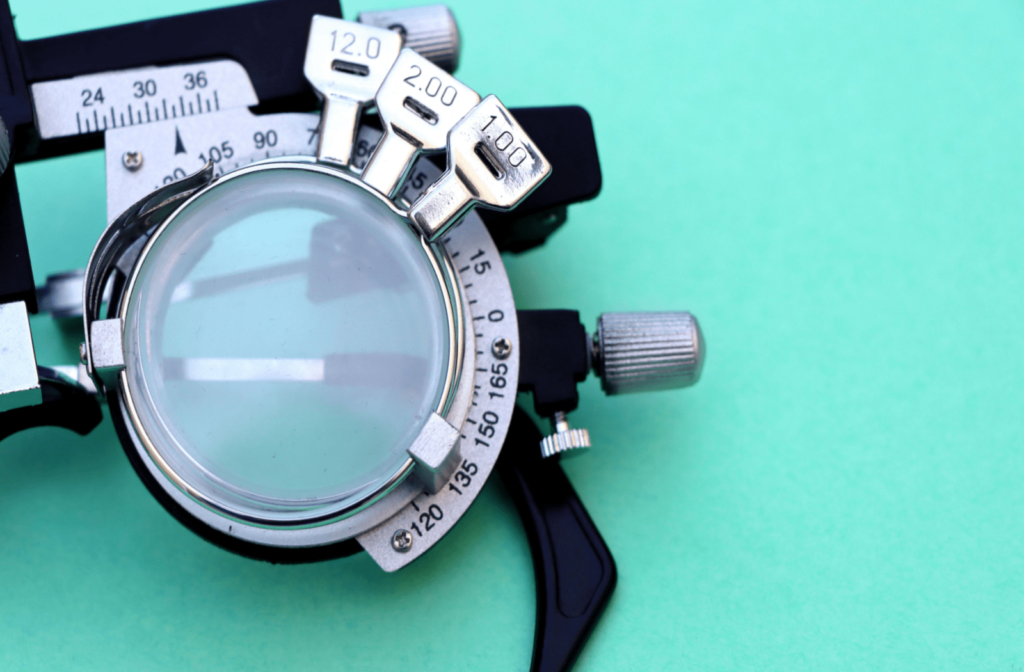You may have heard of myopia or nearsightedness—a refractive error in which you can clearly see nearby objects and distant objects appear blurry. But have you heard about high myopia?
High myopia is severe myopia that requires a higher prescription for correction. And because it generally begins in childhood, routine children’s eye exams are essential for detecting early signs of eye issues and preventing them from worsening.
Read on to learn more about high myopia, symptoms, diagnosis, and treatment options.
High Myopia
An estimated 30% of the Canadian population is myopic. Myopia and high myopia prevalence are becoming more common, occur at a younger age, and progress faster. The Canadian Association of Optometrists recognizes it as a global public health issue and recommends anyone diagnosed with high myopia have more frequent eye exams.
High myopia is myopia that progresses to a point where it requires -6 diopters or more of spherical correction. The diopter is the unit that measures focusing power in a prescription lens. A higher negative diopter means thicker lenses.
High myopia occurs if the eyeball is very long or the cornea is too steep. It can worsen until the 20s, when it levels off or stabilizers. Symptoms of high myopia include:
- Headaches
- Blurred vision
- Squinting
- Eye strain
Refractive correction of high myopia is with glasses or contact lenses. For adults and sometimes children, LASIK surgery may be an option. Although, even with correcting, high myopia can put a person at increased risk for the following vision problems:
- Open-angle glaucoma: The risk of developing glaucoma is almost 50% higher in individuals with high myopia.
- Cataracts: Individuals with high myopia are more likely to have cataract surgery.
- Retinal tears: Retinal tears can lead to retinal detachment. Individuals with high myopia are 5 or 6 times more at risk of developing retinal detachment.
- Myopic maculopathy: These are atrophic changes that can lead to blindness. There is no cure for this condition.
How is High Myopia Diagnosed
Myopia and high myopia, like other refractive errors, require an eye exam for diagnosis and are usually picked up in childhood. It can develop in adults from visual stress or diabetes.
Diagnosis also includes medical and family history and an exam to view the retina, the optic disc, and the macula at the back of the eye.
Correction and Treatment of High Myopia
Your eye doctor has several options to treat high myopia. The most common are glasses and contact lenses for refractive error and blurry vision. Myopic control is a method to slow the progression and prevent sight-threatening eye diseases. These can include:
Refractive Surgery
LASIK, or laser-assisted in situ keratomileusis, is a type of eye surgery that uses a laser to reshape the layers underneath the cornea. Photorefractive Keratectomy (PRK) also uses a laser to reshape the cornea’s surface.
Orthokeratology
Orthokeratology is a special corneal reshaping lens used to correct and slow myopia. These custom-fitted, hard contact lenses, worn at night, gently reshape the cornea. During the day, children don’t need to wear glasses or contact lenses.
Intraocular Lenses
Intraocular lenses replace the natural lens of the eye with an artificial one while preserving the cornea. It’s usually performed to prevent or correct cataracts.
Atropine Eye Drops
Atropine in low doses slows the progression of myopia. It is available as drops or ointment. Your optometrist can recommend if it is safe to use with other treatment options.
MiyoSmart lenses
These eyeglass lenses slow myopic progression. They are ideal for children, made to fit any age, and shown to slow myopia progression by 60%.
Preserve Your Vision with Correction
There is no cure for high myopia, but by taking the following steps, you can preserve vision and visual health:
- Slow the progression
- Correct the refractive error
- Detect and prevent high-risk eye diseases
- Cut down on screen time
- Wear sunglasses outside to protect the eyes
- Use ample lighting when reading or working
- Avoid smoking
- Maintain a healthy diet
Treatments and methods are pivotal to delaying the progression as more people and children develop myopia. Regular eye exams are crucial in detecting evidence of associated eye disorders.
If you experience symptoms or notice changes in your vision related to myopia, book an appointment with Individual Eyes today. Laser eye surgery and myopic control are two specialties where we use the latest eye care technology to provide comprehensive eye care to all ages.



